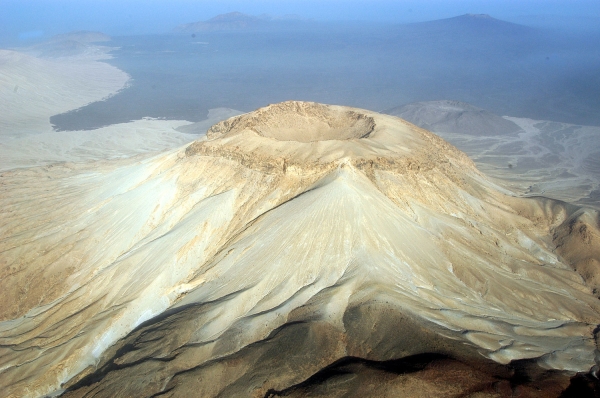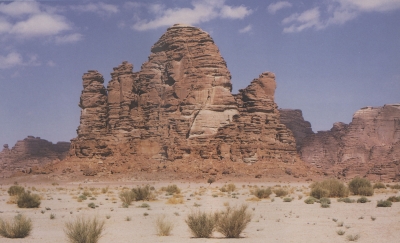
Al-Abyad Mountain, also known as Jabal Abyad (the White Mountain), is one of the volcanic mountains in the Kingdom of Saudi Arabia. It is located in al-Madinah al-Munawwarah province, specifically northeast of al-Thamad Center, southeast of Khaybar governorate. It is part of the Harrah Khaybar Mountain range, with an elevation of 2,093 m above sea level.
Formation of al-Abyad Mountain
Al-Abyad Mountain was formed by ancient volcanic activities and is considered one of the geological landmarks of Harrah Khaybar, one of the largest volcanic fields in the Kingdom, estimated to cover an area of approximately 14,600 km. Al-Abyad Mountain lies within the border between the provinces of Hail and al-Madinah al-Munawwarah.
Al-Abyad Mountain serves as the center of Harrah Khaybar and encompasses a variety of volcanic cones and highlands. It also functions as a watershed area, as tributaries of Wadi Rumah flow from its eastern slopes, while tributaries of Wadi Khaybar, one of the main tributaries of Wadi al-Hamd, flow from its western slopes.
Al-Abyad Mountain rocks
Al-Abyad Mountain is characterized by its conical shape and the distinctive, white-colored rocks formed from acidic volcanic rocks called comendite. At its summit, it contains a deep crater with a diameter of approximately four hundred m and a depth of around forty-five m.
The mountain is surrounded by a group of volcanic cones, including the mountains: al-Bayda', al-Qidr, al-Ithmur, Hamroun, and al-Aqir. Al-Abyad Mountain is specifically located near the northern edges of Harrat Khaybar, bordered by the mountains of al-Bayda' to the west, Umm Tuwayq to the east, al-Abeel to the north, and al-Aqir to the south.
Related quizzes
Related articles


